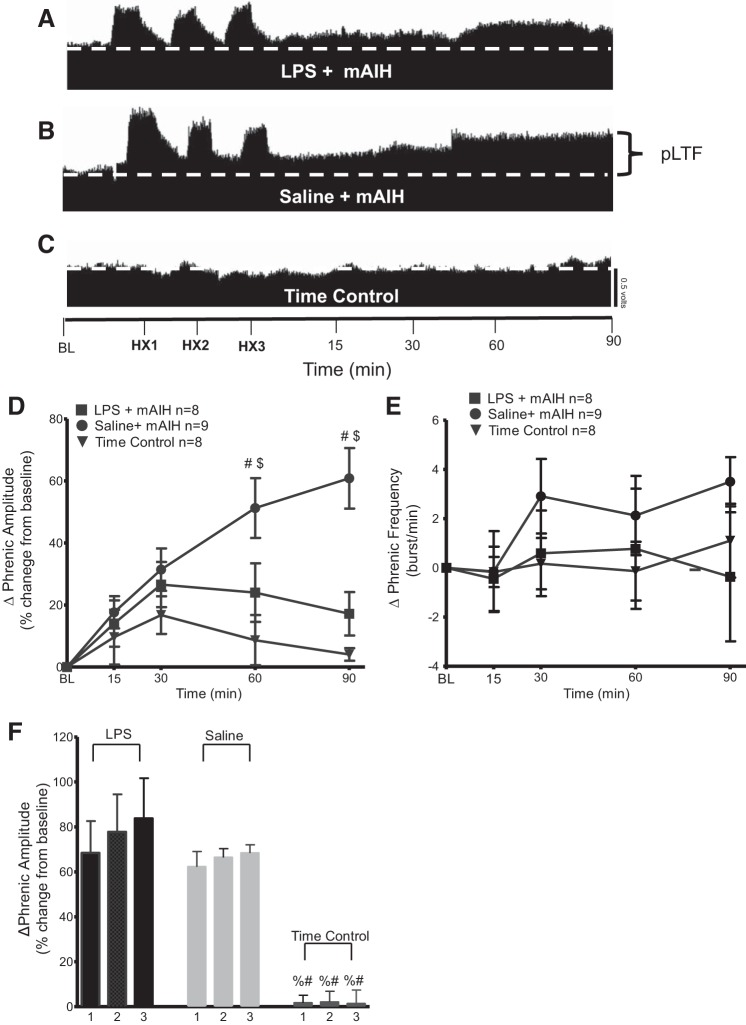Fig. 2.
Systemic inflammation induced by LPS (100 μg/kg; 24 h postinjection) attenuates phrenic long-term facilitation (pLTF) elicited by moderate acute intermittent hypoxia (mAIH). A–C: representative traces of compressed integrated phrenic neurograms during and following mAIH. A: LPS-injected group was exposed to mAIH, and no longer exhibits pLTF. B: in contrast, the saline-injected group exposed to mAIH exhibits robust pLTF. C: time controls (LPS or saline groups without mAIH exposure) do not show any consistent, time-dependent changes in phrenic burst amplitude. HX1, HX2, and HX3 are hypoxia 1, hypoxia 2, and hypoxia 3, respectively; BL, baseline. D: group data for phrenic burst amplitude (percent change from baseline). LPS + mAIH (n = 8) and saline + mAIH (n = 9) were compared with time controls (n = 8). LPS + mAIH was significantly reduced vs. saline + mAIH at 60 and 90 min. LPS + mAIH rats were not significantly different from time controls at any time, but were significantly different from saline + mAIH at 60 and 90 min. Significance is P ≤ 0.05: #significance vs. time control; $significance vs. LPS. E: group data for phrenic burst frequency (bursts/min). LPS + mAIH (n = 8) and saline + mAIH (n = 9) were compared with time controls (n = 8). There were no significant differences between any group or time point (P > 0.05). F: there is no progressive augmentation of the short-term hypoxic phrenic response during mAIH + saline or mAIH + LPS. The numbers represent hypoxic episodes (1–3). Significance is P ≤ 0.05: %significance vs. saline; #significance vs. LPS.

